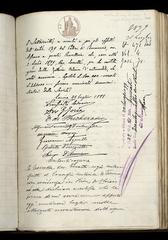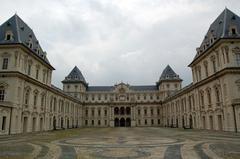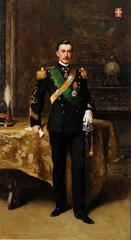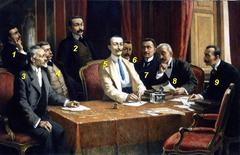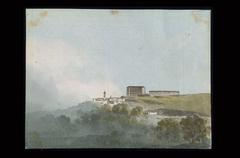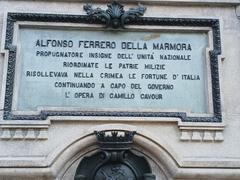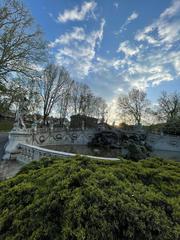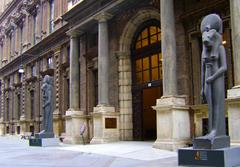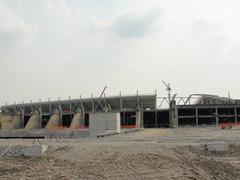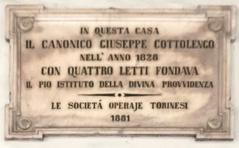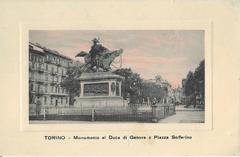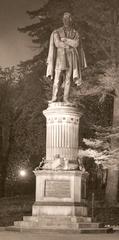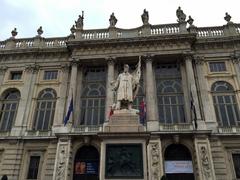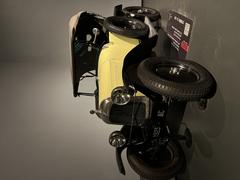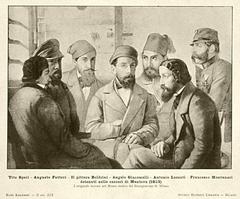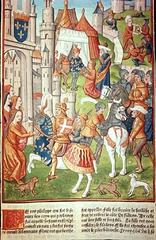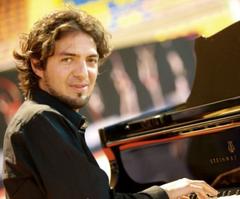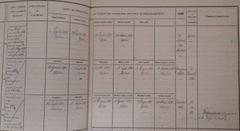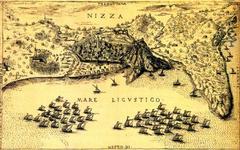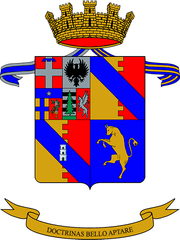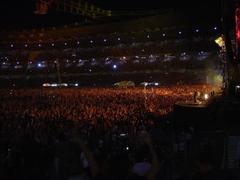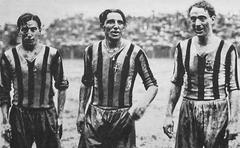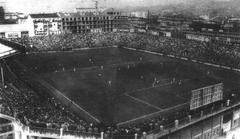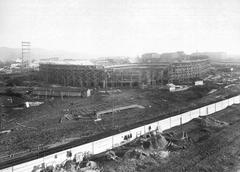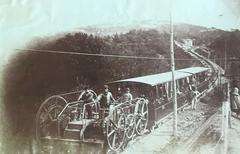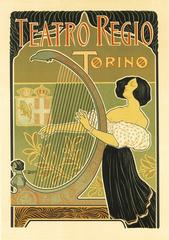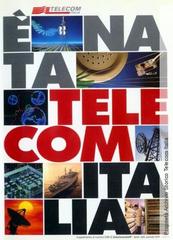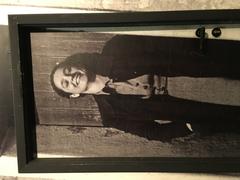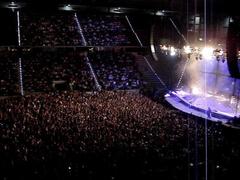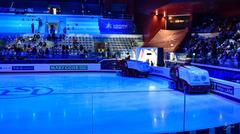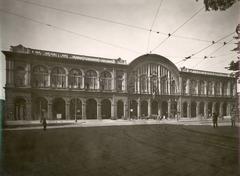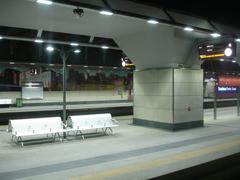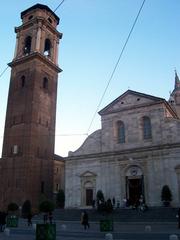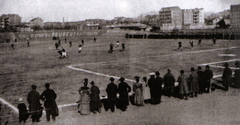Portone del Diavolo: Visiting Hours, Tickets, and Historical Sites in Turin
Date: 14/06/2025
Introduction
In the heart of Turin, Italy, the Portone del Diavolo—translated as the “Devil’s Door”—stands as one of the city’s most enigmatic and captivating landmarks. Located at Via XX Settembre 40, this imposing Baroque portal is renowned not only for its artistic mastery and elaborate woodwork but also for the centuries-old legends and esoteric symbolism it embodies. The door’s sinister devil’s head and intricate ironwork have long fueled Turin’s reputation as a city where history, mysticism, and architecture intertwine (Atlas Obscura; Turismo Torino).
This guide provides a comprehensive overview of the Portone del Diavolo, including its historical context, cultural significance, architectural features, visitor information, travel tips, and nearby attractions. Whether you are an architecture enthusiast, a seeker of the mysterious, or a curious traveler, the Portone del Diavolo offers a unique window into Turin’s layered heritage.
Historical Context and Cultural Significance
Origins and Early History
Constructed in 1675, the Portone del Diavolo is a masterpiece of late Baroque design. It was commissioned during a period of urban transformation under the House of Savoy, reflecting both the ambitions of Turin’s aristocracy and the city’s affinity for esoteric and Masonic traditions (Atlas Obscura). The building’s original owner is believed to be Giovanni Battista Trucchi di Levaldigi, a nobleman who sought to showcase Turin’s mystical reputation.
The Devil’s Door: Legends and Symbolism
The most enduring legend claims the door was completed overnight with the Devil’s assistance after a desperate craftsman invoked supernatural aid. By morning, the craftsman had vanished, leaving behind the ominous devil’s face now carved into the wood. This story, whether apocryphal or not, has cemented the Portone del Diavolo’s status as a symbol of Turin’s occult heritage (Italy Magazine; Torino Segreta).
Turin itself is often described as one of the vertices of Europe’s “Magic Triangle”—alongside Lyon and Prague—further deepening the city’s association with mysticism, alchemy, and secret societies (Guida Torino). The Portone del Diavolo is a focal point for these legends, attracting visitors intrigued by the city’s magical past.
Architectural Features
Baroque Craftsmanship
The Portone del Diavolo exemplifies Baroque artistry: its robust wooden panels (likely crafted from oak or walnut) feature deep relief carvings, elaborate scrollwork, floral motifs, and, most prominently, a grimacing devil’s head. This grotesque visage, with curling horns and bulging eyes, dominates the upper panel, casting dramatic shadows throughout the day (Atlas Obscura).
Ironwork and Decorative Details
Original wrought iron elements—such as the knocker, shaped like a horned demon’s face with serpents forming the handle—combine macabre symbolism with exceptional craftsmanship. The iron studs and hinges further accentuate the door’s Baroque aesthetic, while the juxtaposition of cherubs and grimacing faces highlights Turin’s tradition of embedding hidden meanings within artistic motifs (Italy Magazine).
Integration and Preservation
Set within a grand stone portal with classical pilasters and entablature, the door blends seamlessly into the building’s historic façade. Periodic restoration efforts led by heritage organizations ensure the preservation of both wood and ironwork, allowing visitors to appreciate the door much as it appeared in the 17th century (Atlas Obscura).
Esoteric Symbolism and Urban Legends
Occult Connections
The Portone del Diavolo’s imagery is rich in esoteric symbolism. The building once housed a tarot factory, and the number 15—the Devil in tarot—coincidentally marked the original street address and is the tram route passing nearby. Such numerological and symbolic associations add layers to the door’s mystical reputation (Guida Torino; Gite Fuori Porta in Piemonte).
The door is also associated with unsolved mysteries and paranormal events, including stories of vanished doormen and ghostly apparitions. Whether these tales are fact or folklore, they continue to fuel Turin’s allure as a city of secrets (TorinoFree).
Visitor Information: Hours, Tickets, and Accessibility
Location
- Address: Via XX Settembre 40, Turin, Italy
- Building: Palazzo Trucchi di Levaldigi (now home to Banca Nazionale del Lavoro)
Visiting Hours
- The Portone del Diavolo is visible from the street 24/7.
- Interior access to the building is restricted to bank business hours (Monday–Friday, 8:30 AM–4:30 PM) and is not open to the public.
Tickets and Entry Fees
- Free: There is no ticket required to view the door from the street.
- Guided Tours: Several local companies offer “mystery” or “esoteric” walking tours that include the door as a highlight. Booking in advance is recommended; prices typically range from €10–€25 (Turismo Torino).
Accessibility
- The site is wheelchair accessible. The sidewalk and approach are level, though crowds may be present during peak hours.
- Public transport, including tram line 15, stops nearby. The main train station, Porta Nuova, is a 15-minute walk away.
Practical Tips
- Best Times: Early morning or late afternoon offers ideal lighting and fewer crowds.
- Photography: Permitted from the street; avoid flash to protect the woodwork.
- Etiquette: The building is a working bank—do not block the entrance or disturb patrons.
- Languages: Guided tours are often available in English and other languages; most signage is in Italian.
Nearby Attractions and Experiences
- Piazza Castello: Turin’s grand central square, flanked by Palazzo Reale, Palazzo Madama, and Teatro Regio (Wanderlust Chloe).
- Museo Egizio: World-renowned Egyptian Museum, a short walk away.
- Piazza dello Statuto: Center of Turin’s “black magic triangle,” known for esoteric symbolism.
- Museo d’Arte Orientale (MAO): Features Asian and Islamic art in a historic palace (Our Tapestry).
- Porta Palazzo Market: Europe’s largest open-air market.
- Mole Antonelliana and National Cinema Museum: Iconic tower and interactive museum.
- Rondò della Forca: Former execution site, now a site of historical reflection.
- Accademia Albertina di Belle Arti: Historic arts academy and museum.
Dining, Shopping, and Services
- Dining: Enjoy Turin’s aperitivo culture at local bars; try Piedmontese dishes at trattorias; sample gelato at GROM.
- Shopping: Explore Via Garibaldi’s boutiques and Porta Palazzo for local products.
- Tourist Office: Located in Piazza Castello for maps and assistance.
- Restrooms: Available in major squares, museums, and cafes.
Seasonal Events and Special Tours
- Halloween and Autumn: Themed tours and festivals highlight Turin’s mystical heritage (Our Tapestry).
- Guided Tours: Book ahead for esoteric or historical walking tours that include the Portone del Diavolo and related sites (Guida Torino).
Frequently Asked Questions (FAQ)
Q: Do I need a ticket to see the Portone del Diavolo?
A: No, street viewing is free. Guided tours require booking and may charge a fee.
Q: Can I enter the building to see the door up close?
A: Interior access is restricted to bank customers during business hours; public tours do not include entry.
Q: Is the site wheelchair accessible?
A: Yes, the sidewalks are accessible.
Q: Are guided tours available?
A: Yes, several local providers offer tours focused on Turin’s occult and esoteric sites.
Q: What is the best time to visit?
A: Early morning or late afternoon for optimal light and fewer crowds; spring and autumn for pleasant weather.
Visuals and Media
Alt text: Detailed view of Portone del Diavolo carved wooden door featuring devil’s face in Turin.
Access an interactive map of Turin’s historic center, including the Portone del Diavolo, here.
Summary
The Portone del Diavolo is a unique testament to Turin’s blend of Baroque magnificence and esoteric mystery. While interior access is limited, the detailed carvings and rich legends make it an essential stop on any exploration of Turin’s historic center. Pair your visit with a guided tour to uncover the stories behind the city’s magical reputation, and don’t miss the nearby attractions that round out Turin’s cultural and mystical landscape.
For up-to-date guidance, audio tours, and insider tips, download the Audiala app and follow official tourism resources.
Sources and Official Links
- Atlas Obscura: Portone del Diavolo
- Turismo Torino: Curiosities and Legends - Portone del Diavolo
- Italy Magazine: Portone del Diavolo - Turin’s Devil’s Door
- Torino Segreta: Portone del Diavolo Turin
- Guida Torino: Curiosità a Torino - Il Portone del Diavolo
- Wanderlust Chloe: Turin Italy Things to Do
- Gite Fuori Porta in Piemonte: Il Portone del Diavolo, Mistero e Leggenda a Torino
- TorinoFree: Oscura Leggenda del Portone del Diavolo
- Our Tapestry: Door of the Devil
- Risparmi e Viaggi: Esplorando il Mistero Oscuro di Torino


